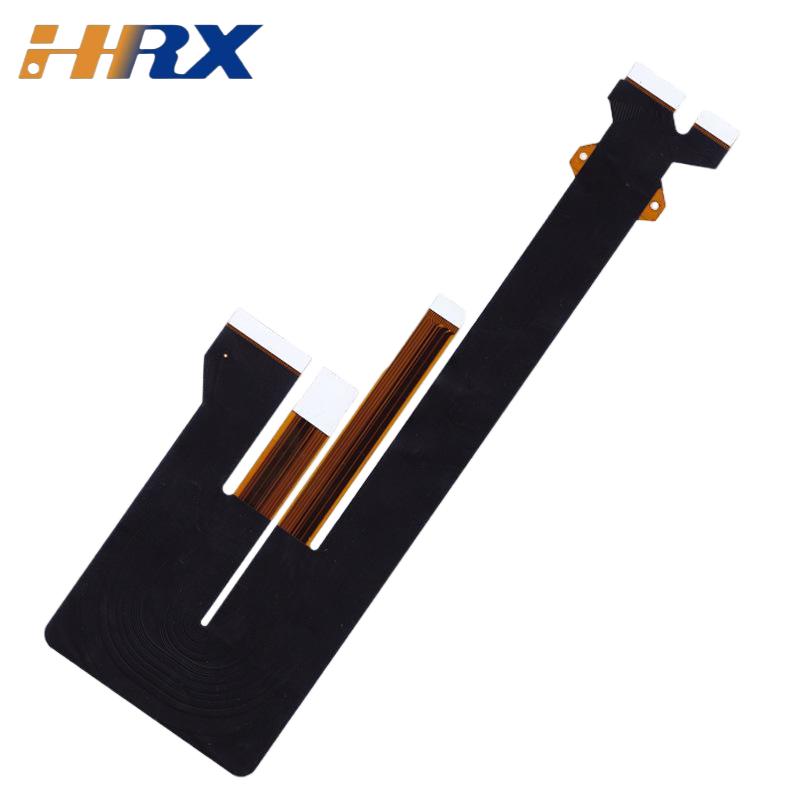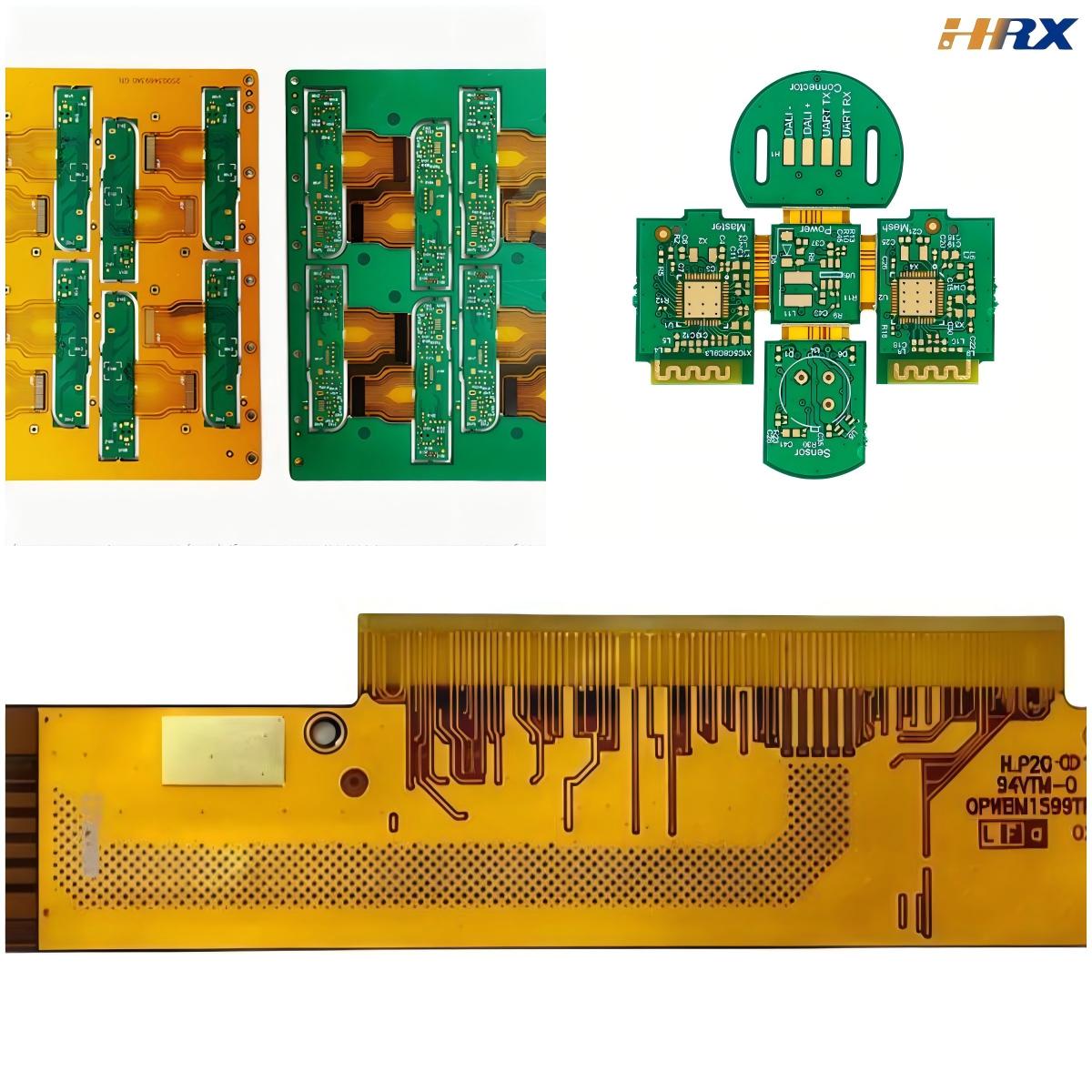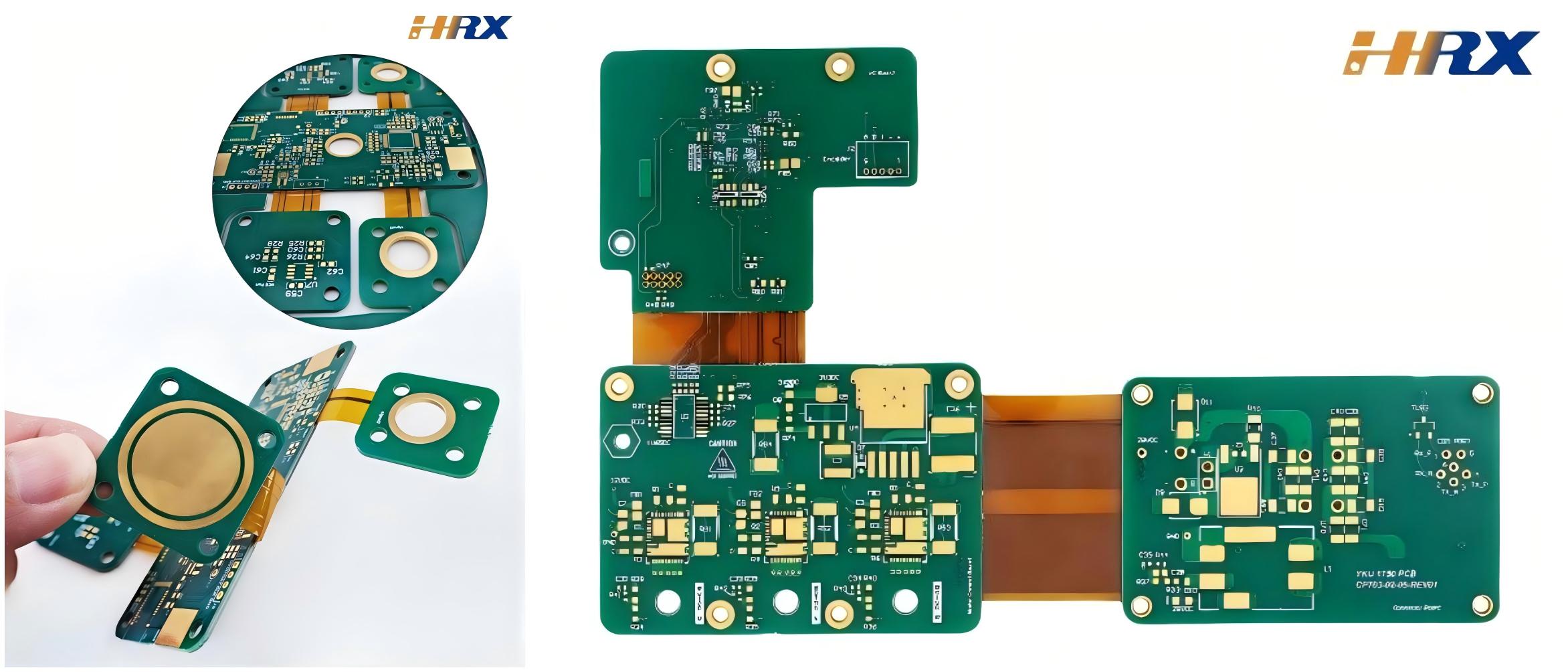Search
Critical Considerations in Aerospace FPC: Design, Manufacturing, and Quality Control
- Jul 19,2025
-
Share
In the aerospace industry, where precision, reliability, and durability are non-negotiable, flexible printed circuits (FPCs) – also known as flex circuits or flexible PCBs – play a pivotal role in enabling advanced avionics, satellite systems, and space exploration technologies. Unlike standard FPCs used in consumer electronics, aerospace flexible circuits must withstand extreme environmental conditions, including wide temperature fluctuations, intense vibrations, radiation exposure, and high levels of mechanical stress. This demands a rigorous approach to design, manufacturing, and quality inspection. Let’s delve into the critical considerations in each phase, and explore how specialized manufacturers like Shenzhen Huaruixin Electronics Co., Ltd. are addressing these challenges.

Design: The Foundation of Aerospace FPC Reliability
The design phase of aerospace FPCs is where the foundation for performance and durability is laid. Several key factors must be prioritized to meet stringent aerospace standards:
Material Selection: Aerospace flex circuits require substrates and adhesives that can operate in temperatures ranging from -55°C to 125°C (and beyond for certain space applications) while maintaining mechanical and electrical integrity. Materials must also resist radiation, chemicals, and moisture – critical for compliance with standards like IPC-4101. Polyimide (PI) substrates are preferred for their excellent thermal stability and dielectric properties, but the specific grade (e.g., low-outgassing PI for space applications) must align with mission-critical environmental parameters. Huaruixin Electronics, a leading ODM/OEM for flexible printed circuits, collaborates with clients to select optimal materials, leveraging partnerships with top-tier suppliers to ensure compliance with aerospace specs like NASA-STD-6016.
Structural Integrity and Flexibility Balance: Aerospace FPCs often need to fit into compact, irregular spaces within aircraft or satellites, requiring precise folding and bending. The design must account for dynamic flex life over the product’s lifecycle without compromising conductor integrity – a key focus of IPC-2223, the standard for flexible circuit design. This involves careful consideration of trace routing, minimum bend radius (typically 10x the substrate thickness for dynamic applications), and reinforcement with stiffeners in high-stress areas. Huaruixin’s engineering team, specializing in rigid-flex and FPC design, uses advanced FEA simulation tools to model stress points and optimize layouts, ensuring reliability even in repeated flexing scenarios.
Redundancy and Fail-Safe Design: In aerospace applications, a single failure can have catastrophic consequences. Thus, aerospace flex PCB designs often incorporate redundant traces, critical component backups, and robust interconnects (e.g., plated through-holes with enhanced aspect ratios). Designers must also minimize potential failure points, such as sharp corners in traces or weak solder joints. Huaruixin’s design process includes rigorous failure mode and effects analysis (FMEA) aligned with SAE ARP4761, identifying vulnerabilities early – a practice honed through its extensive experience in high-reliability industries.
Signal Integrity and EMI/EMC: Aerospace systems handle sensitive signals and operate in environments with high electromagnetic interference (EMI). FPC designs must minimize crosstalk, ensure controlled impedance (±10% tolerance for high-frequency applications), and incorporate shielding (e.g., copper foil or conductive coatings) to meet MIL-STD-461 for electromagnetic compatibility (EMC). Huaruixin’s expertise in high-frequency flex circuit design ensures signal integrity is maintained, even in complex multi-layer configurations with microvias – critical for aerospace data buses like MIL-STD-1553.
Manufacturing: Precision and Consistency for Extreme Environments
Aerospace FPC manufacturing demands unparalleled precision and adherence to strict process controls, especially for ISO9001-certified production. Key considerations include:
Controlled Manufacturing Environment: Even minor contaminants can compromise FPC performance in harsh aerospace conditions. Manufacturing facilities must maintain Class 100 or better cleanrooms, with strict humidity (30-50%) and temperature (20-24°C) controls. Shenzhen Huaruixin Electronics’ large-scale manufacturing base – certified to AS9100D – is equipped with state-of-the-art cleanroom facilities and automated production lines (including laser direct imaging systems), ensuring that each aerospace flex circuit is manufactured in a contamination-free environment.
Advanced Fabrication Techniques: Aerospace FPCs often require thin materials (25μm PI substrates), fine line widths/spacing (down to 25μm/25μm), and tight tolerances. Processes such as laser drilling for microvias (≤100μm diameter), precise alkaline etching, and lamination under controlled pressure (100-300 psi) and temperature (170-200°C) are critical. Huaruixin’s investment in advanced manufacturing equipment – including automated optical inspection (AOI) for fine features – combined with its team’s technical expertise, allows for consistent production of high-precision FPCs that meet the stringent requirements of aerospace applications.
Material Handling and Storage: The sensitive materials used in aerospace flex circuits – such as high-performance adhesives and rolled annealed (RA) copper foils – require careful handling to prevent oxidation or degradation. Huaruixin implements strict material management protocols, including ISO 9001-aligned traceability systems that track each material’s lot number, storage conditions, and expiration dates, ensuring that only fresh, qualified materials are used in production.
Process Validation and Documentation: Aerospace manufacturing requires comprehensive process validation to ensure consistent output. This includes statistical process control (SPC) for critical parameters (e.g., etch depth, lamination bond strength) and regular equipment calibration per ISO . Huaruixin maintains detailed documentation of all manufacturing processes, enabling full traceability from raw materials to finished products – a requirement for compliance with aerospace standards such as ISO9001 and NADCAP.
Quality Inspection: Rigorous Testing for Mission-Critical Reliability
Quality inspection for aerospace FPCs goes far beyond standard electronic testing, with a focus on ensuring reliability in extreme conditions. Key inspection protocols include:
Comprehensive Electrical Testing: This includes continuity testing (≤1Ω resistance), insulation resistance testing (≥10^12Ω at 500V DC), and impedance testing using network analyzers. For high-frequency applications, time-domain reflectometry (TDR) verifies signal integrity, with results compared against IPC-TM-650 standards. Huaruixin’s testing labs are equipped with advanced electrical test equipment, enabling thorough validation of each FPC’s performance.
Environmental Testing: Aerospace flex circuits must withstand extreme temperatures, thermal cycling, vibration, shock, and radiation. Environmental testing includes thermal shock testing (-55°C to 125°C, 1000 cycles per MIL-STD-883 Method 1011), random vibration testing (20-2000Hz, 20g rms per MIL-STD-883 Method 2026), and humidity testing (85% RH, 85°C for 1000 hours). Huaruixin partners with NADCAP-accredited testing laboratories to conduct these rigorous tests, ensuring FPCs perform reliably in the intended operating environment.
Mechanical Integrity Testing: This includes peel strength testing (≥0.7 lb/in for coverlay adhesion per IPC-TM-650 Method 2.4.9), flex endurance testing (≥100,000 cycles for dynamic applications), and tensile testing (≥20,000 psi for copper conductors). Huaruixin’s quality control team performs these tests on sample units from each production run, ensuring mechanical properties meet or exceed aerospace specifications.
Visual and Microscopic Inspection: Even minor defects – such as cracks, delamination, or foreign particles – can lead to failure in aerospace applications. Visual inspection using high-magnification microscopy (40x-100x) is performed to detect these defects, with acceptance criteria aligned to IPC-A-600F, the industry standard for printed board acceptance. Huaruixin’s quality inspectors are trained to identify even the smallest anomalies, ensuring that only flawless FPCs are shipped to clients.
Huaruixin Electronics: Your Trusted Aerospace FPC Partner
Shenzhen Huaruixin Electronics Co., Ltd. – an ISO9001-certified ODM/OEM specializing in FPC, PCB, and rigid-flex printed boards – brings decades of expertise to addressing the unique challenges of aerospace FPC design, manufacturing, and quality control. Its combination of technical proficiency, advanced manufacturing facilities, and commitment to high-reliability standards ensures each aerospace flex circuit is tailored to meet mission-critical needs.
Whether you’re developing satellite communication systems, aircraft avionics, or deep-space exploration equipment, Huaruixin delivers high-reliability FPC solutions. Our engineering team collaborates with clients from design to production, providing DFM (design for manufacturing) support and technical guidance to accelerate project success.
If you’re seeking a trusted aerospace FPC manufacturer, contact us today. As specialists in high-reliability flexible circuits, we’re ready to support your project needs. For more industry insights, visit www.hrxfpc.com or email sales@hrxfpc.com to discuss your requirements, exchange expertise, and explore collaboration opportunities. We look forward to powering your next aerospace innovation.

Let’s talk! We’ll provide the perfect solution for you!
-
 Huaruixin Electronics mainly produces printed circuit boards as the core business, to provide customers with one-stop solutions for FPC/PCB production, components sourcing and Assembly.
Huaruixin Electronics mainly produces printed circuit boards as the core business, to provide customers with one-stop solutions for FPC/PCB production, components sourcing and Assembly. - WHAT WE DO — PCB Design Solutions — Flex PCB Production — Components Sourcing — FPC&PCB Assembly
- PRODUCTS — Single Sided Flexible Circuits — Double Sided Flexible Circuits — Multilayer Flexible Cirucits — Rigid-Flex Circuits — FPC Assembly — PCB Assembly
- CAPABILITY — FPC Capability — Rigid-Flex Capability — PCB Capability — Assembly Capability
- Copyright © 2024 Shenzhen Huaruixin Electronics Co., Ltd. All Rights Reserved.
- Design By BONTOP


